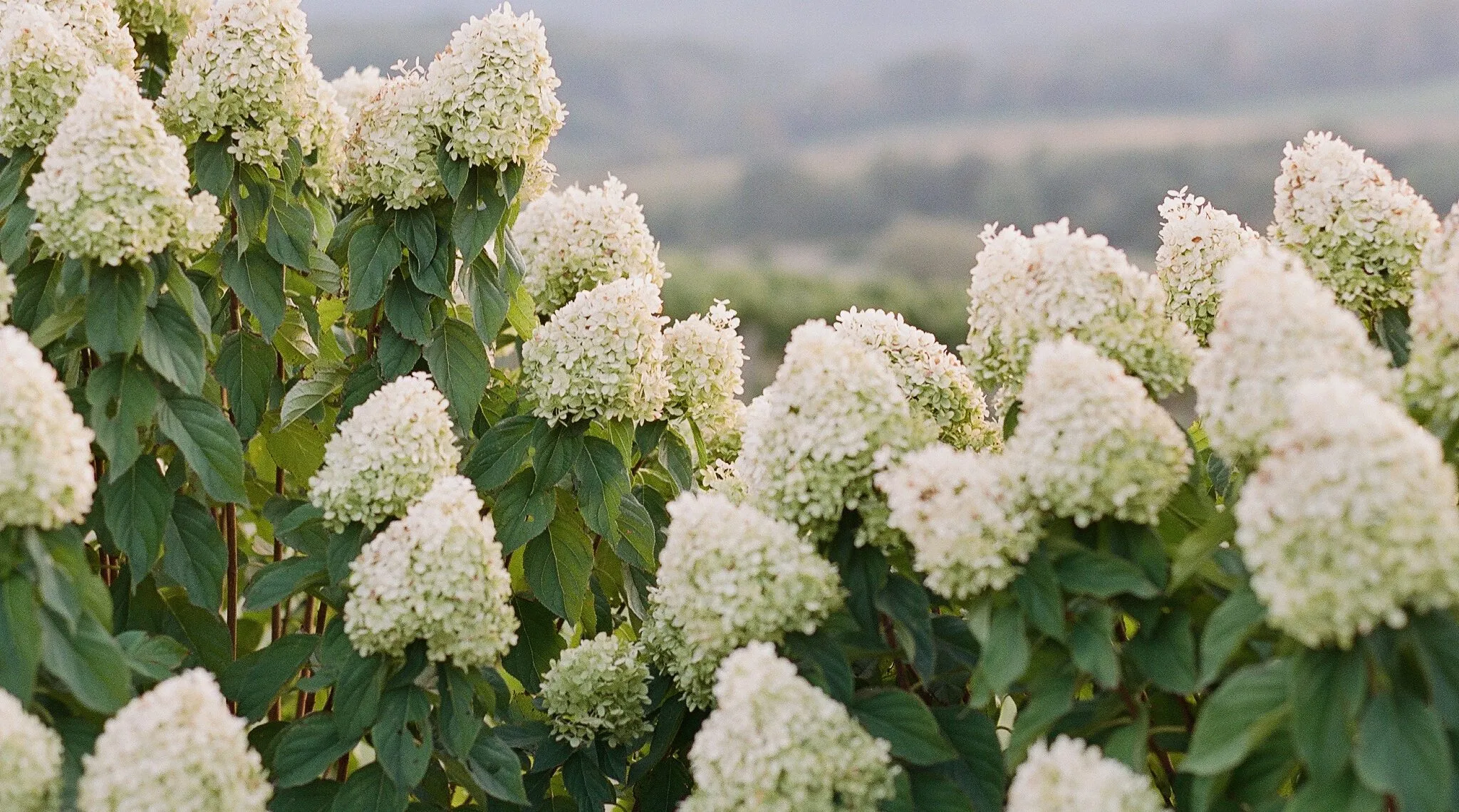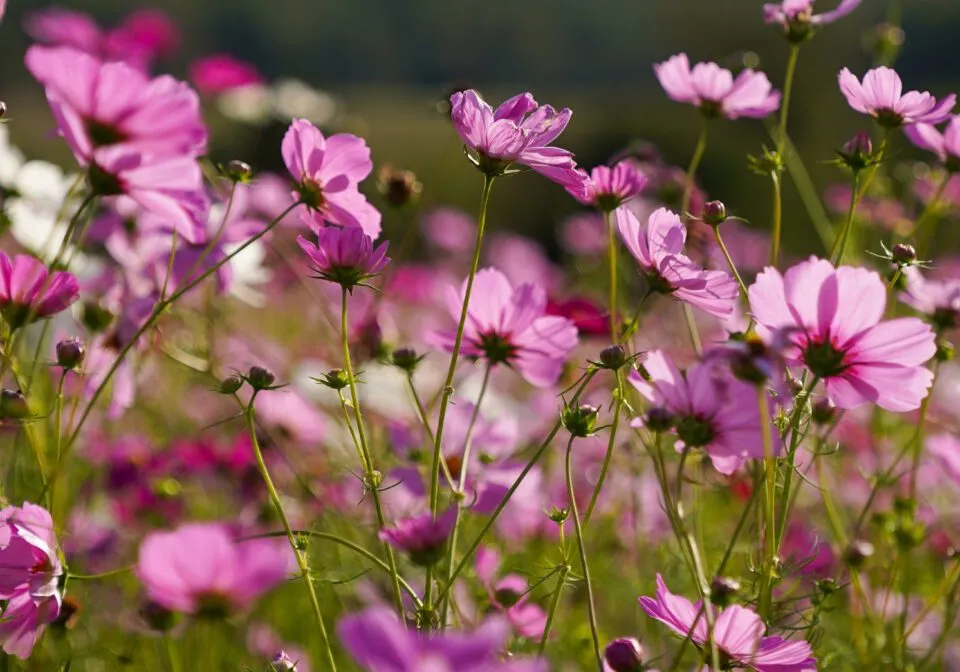Over the years, the Hydrangea Pathway has become a favorite feature for both visitors exploring the vineyard and couples celebrating their special day. Pippin’s Head Gardener, Celina DeBrito, shares everything you need to know about Limelight hydrangeas and the story behind our iconic vibrant blooms.
The Inspiration Behind the Hydrangea Pathway
Planted in the spring of 2012, the Hydrangea Pathway was one of Pippin Hill’s first major landscaping projects.
“Designed to create a memorable first impression, the pathway frames a stunning view of the signature Granary doors and lush maple trees as you walk toward the Granary and Tasting Room. Views of the pathway from above can also be seen through the Loft windows, enjoyed by wedding parties on their special day. The design intentionally narrows the view, drawing attention to the building before opening up to reveal breathtaking valley views from the Vineyard Lawn, overlooking the Blue Ridge Mountains. The landscape offers unspoiled natural beauty, with the entire area protected by a conservation easement.” – Dean Andrews, Co-Founder & CEO of Easton Porter Group
About Limelights
Our Limelight hydrangeas belong to the paniculata or panicle family and are highly adaptable and easy to grow. Full Limelight hydrangeas grow to about 8×8 feet, so for creating a hedge or pathway, you should space the plants 8 feet apart, center to center. If you’re looking for a more compact option for smaller spaces or as an accent plant, the Little Lime variety grows to about 5×5 feet.

Color Changes Throughout the Season
November-February: In winter the blooms transition to a pale tan color and eventually give way to bare stems, yet they retain their iconic structural shape, still lush and striking against the winter vineyard landscape.
March: Pruning typically takes place in February or the beginning of March to encourage spring growth.
April-June: By late April, small green shoots emerge, continuing to grow throughout early summer.
July-August: Large, showy blooms begin to open in mid-July, starting as a bright chartreuse-lime green and fading to a creamy white by August.
September: As nighttime temperatures begin to drop, many of the blooms develop a pinkish-red hue by late summer.
October: With the arrival of fall, the flowers mature into a warm beige or wheat color. By the end of October, any remaining green foliage on the stems transition to brown as well.

Care Tips & Pruning
Limelights will give the best display when planted in full sun, in an area with good drainage. They favor slightly acidic soil and benefit from a yearly application of Holly-tone fertilizer in the spring. Since this variety blooms on new growth, pruning is necessary during the plant’s dormant period—either late winter or early spring—to encourage re-blooming. Start by removing any dead, broken, or diseased branches from the shrub, as well as any suckers at the bottom. Then prune to shape, removing about ⅓ of the shrub’s total height. Only very light pruning during the growing season for plant health, if necessary.
Protecting Hydrangeas from Deer
We get this question often, but sadly, we do not have a simple trick or solution for keeping deer away from hydrangeas. We are very fortunate not to have a major deer problem at Pippin! Limelights and other panicle hydrangeas are believed to be the most deer-resistant varieties due to their smaller leaves and thick, woody stems, unlike mophead varieties with large, tender green leaves that are very appealing to deer. When necessary, we apply Liquid Fence to deter deer and rodents from eating desirable plants, and we’ve had great success with it!
How to Dry Them
Cut the blooms when they are fully open, typically between late September and October, when the flowers have transitioned from chartreuse to white and all the flower heads are open from top to bottom, but before they begin to brown. Place the blooms in a clean bucket or vase with water, then store them in a cool, dry place for at least two weeks, or until they are dry to the touch.
Tips for Beginners and Aspiring Green Thumbs
Limelights are tough, reliable, and disease-resistant, making them an excellent choice for any beginner’s garden! Be sure to cut a few blooms to dry, bringing a piece of your garden inside to enjoy during the winter months.
Happy gardening!
Photography: Victoria Sauer, Lane Creatore, Gideon, Sarah Cramer Shields, Costola, Jen Fariello, Eric Kelley, Angelika Johns, Shauna & Jordan Cooney, Shannon Moffit, Aaron Watson, Austin Trenholm/Sera Petras, Kylie Martin, Sarah Cramer Shields, Jessica Lap

